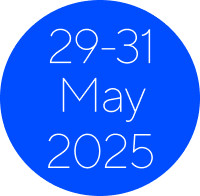Chair: Ashokan Arumugam (United Arab Emirates)
Speakers: Leanne Hassett (Australia), Suzanne McDonough (Ireland), Hanlie Moss (South Africa)
- To summarize sedentary behavior and physical activity guidelines and highlight the considerations for physiotherapists to use these guidelines in different contexts and settings across the globe.
- To explore and understand barriers and facilitators associated with assessing and promoting physical activity of people across the lifespan with and/or without health conditions in low-resource and high-resource settings.
-
To contextualize the role of physiotherapists as facilitators, assessors, and implementers of physical activity guidelines in low-resource and high-resource settings for different countries.
Physical inactivity is a global health problem that physiotherapists should be addressing. This symposium will present current global and country specific sedentary behavior and physical activity (PA) guidelines, discuss barriers and facilitators of PA assessment and interventions, and provide sustainable solutions for PA promotion by physiotherapists across the globe.
First, A/Professor Arumugam will open the symposium by presenting the global burden of sedentary behavior and physical inactivity [1], and the need for valid and reliable self-reported and device-based measures to assess PA in physiotherapy practice [2]. He will provide implications for PA promotion by physiotherapists based on the findings of an ongoing systematic review [3] involving a critical appraisal of PA guidelines for people with and without chronic conditions and/or disabilities.
Next, A/Professor Hassett will share how the WHO PA and sedentary behavior guidelines for people with disability [4] has informed the inclusion of recommendations for people with disability in the Australian 24-hour movement guidelines and PA clinical practice guidelines for people with moderate-to-severe traumatic brain injury [5]. Her presentation will focus on how physiotherapists can use both public health and clinical practice guidelines to promote evidence-based PA with patients. This will include insights from an Australian trial promoting PA through health coaching and activity monitors [6], and the perspectives of key stakeholders (including people with brain injury and their families) about using public health guidelines and tailoring PA promotion to people with disabilities.
Professor McDonough will discuss her research on physiotherapy-led walking interventions, the value of step counts as a metric of PA, and how steps relate to PA guidelines. Many people, including those with health conditions, choose walking as an activity, and wearable PA trackers allow them to set and monitor PA goals. She will present an overview of her work [7,8,9] and others, on the link between steps and health outcomes, how many steps are enough in clinical populations, how physiotherapists can start and progress a walking intervention, how they can advise on walking pace, the value of wearable PA trackers, key design features of digital and non-digital step counter-based interventions, and how to embed these into effective interventions.
Professor Moss will present the barriers and facilitators when implementing PA interventions in low-resourced communities in South Africa. She will explain the cultural diversity of the population and the practical aspects involved in co-designing a sustainable exercise program [10]. She will elaborate on objectively measured PA data in persons with risk factors for noncommunicable diseases, pregnant women, those with intellectual disabilities, and young adults with major depression from her own research. She will summarize potential strategies for the implementation of technology-based solutions for sustainable PA.
The Chair, A/Professor Arumugam, will then summarize the barriers and facilitators to device/technology-based PA assessment and interventions faced by physiotherapists, persons recovered from COVID-19, and office workers in the UAE and India. He will conclude the session by summarizing the key value and challenges for physiotherapists in implementing and/or adapting PA guidelines for different populations and in low- and high-resource settings to address the global public health issue of physical inactivity.
- Katzmarzyk PT et al. Physical inactivity and non-communicable disease burden in low-income, middle-income and high-income countries. British journal of sports medicine. 2022;56(2):101-6.
- Arumugam A, et al. Sedentary and physical activity time differs between self-reported ATLS-2 physical activity questionnaire and accelerometer measurements in adolescents and young adults in the United Arab Emirates. BMC Public Health. 2023;23(1):1045.
- Arumugam A, et al. Physical activity guidelines for adults, older adults, and pregnant women – A systematic review. Physical activity guidelines for adults, older adults, and pregnant women – A systematic review. PROSPERO 2023 CRD42023491339. https://www.crd.york.ac.uk/prospero/display_record.php?ID=CRD42023491339
- Carty C et al. The first global physical activity and sedentary behavior guidelines for people living with disability. Journal of Physical Activity and Health. 2021;18(1):86-93.
- Hassett L, on behalf of the BRIDGES Guideline Development Group. Australian Physical Activity Clinical Practice Guideline for people with moderate to severe traumatic brain injury. 2024. Approved by the Australian National Health and Medical Research Council (NHMRC) 18/04/2024.
- Hassett L, et al. Physical activity coaching for adults with mobility limitations: protocol for the ComeBACK pragmatic hybrid effectiveness-implementation type 1 randomised controlled trial. BMJ open. 2020;10(11):e034696.
- Clarkson P,…..McDonough S. Digital tools to support the maintenance of physical activity in people with long-term conditions: a scoping review. Digital Health. 2022;8:20552076221089778.
- McDonough SM, et al. A study protocol for a randomised controlled feasibility trial of an intervention to increase activity and reduce sedentary behaviour in people with severe mental illness: Walking fOR Health (WORtH) Study. Pilot and Feasibility Studies. 2021;7:1-0.
- Lang AE,….McDonough SM. A randomized controlled trial investigating effects of an individualized pedometer driven walking program on chronic low back pain. BMC musculoskeletal disorders. 2021;22:1-4.
- Makamu-Beteck SJ, Moss SJ, Watson FG, Cameron M. Exercise intervention changes the perceptions and knowledge of non-communicable disease risk factors among women from a low-resourced setting. International Journal of Environmental Research and Public Health. 2022;19(6):3474.
See the 24 focused symposia to be presented at congress.
Find out who the key speakers at congress will be.
Find out which clinical topics will be covered in these discussion-based seminars.




